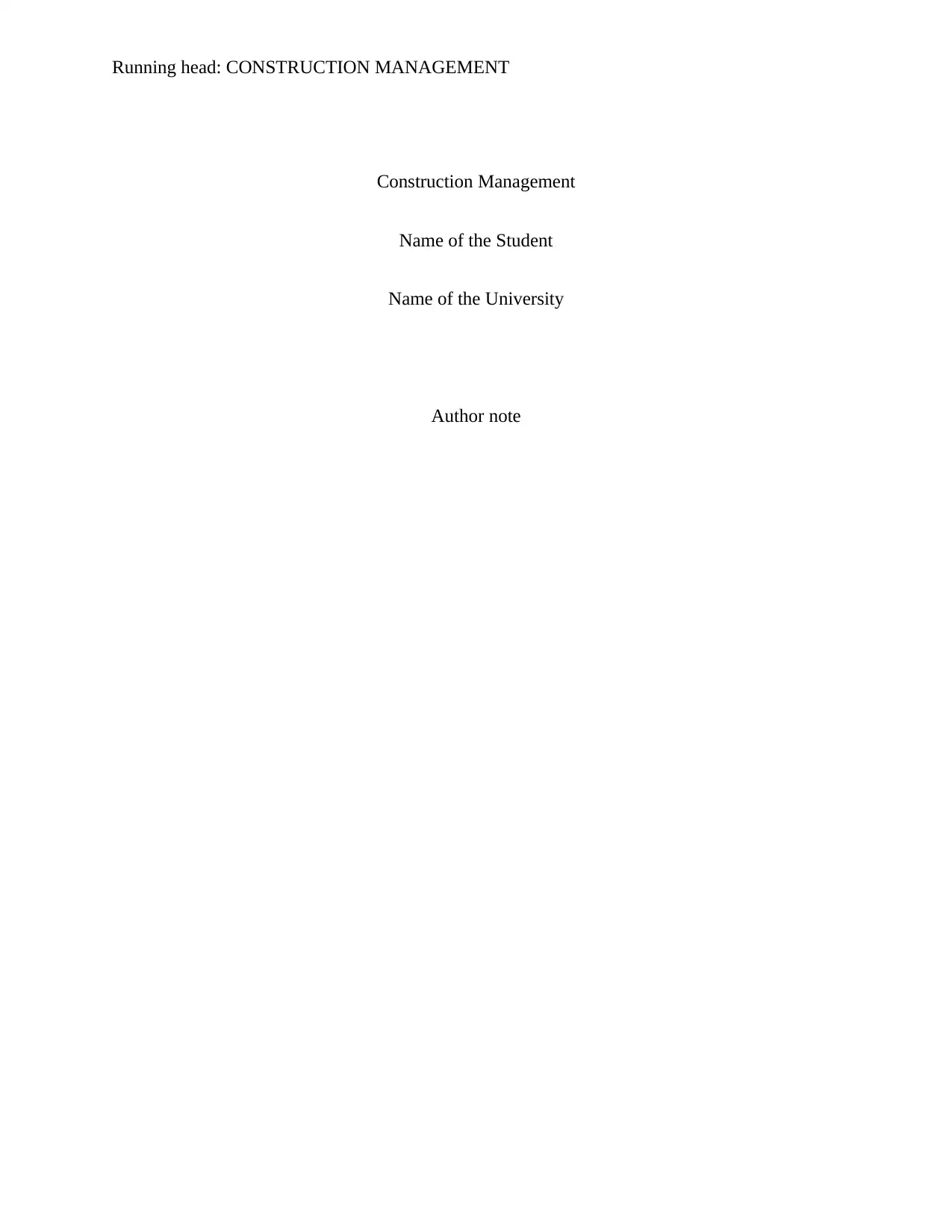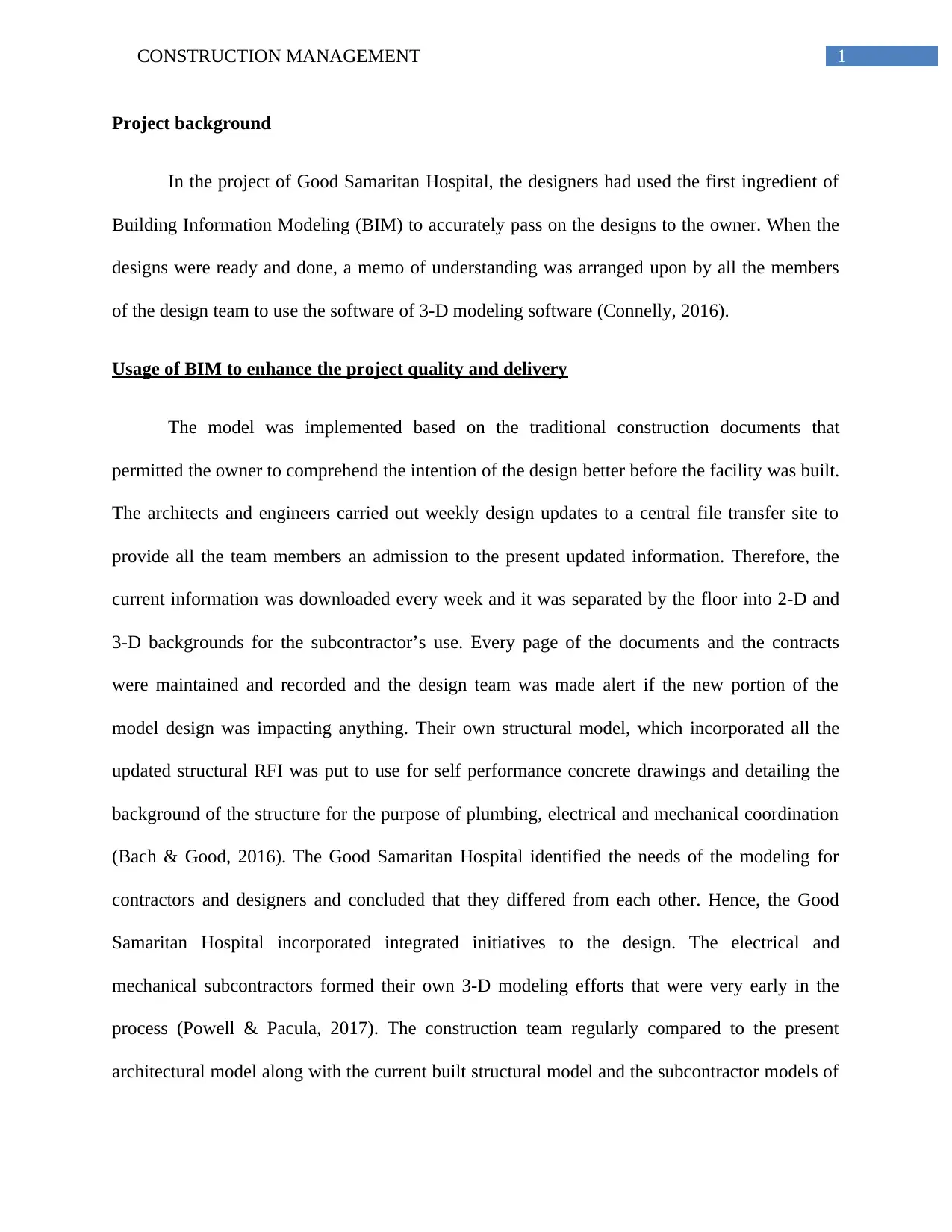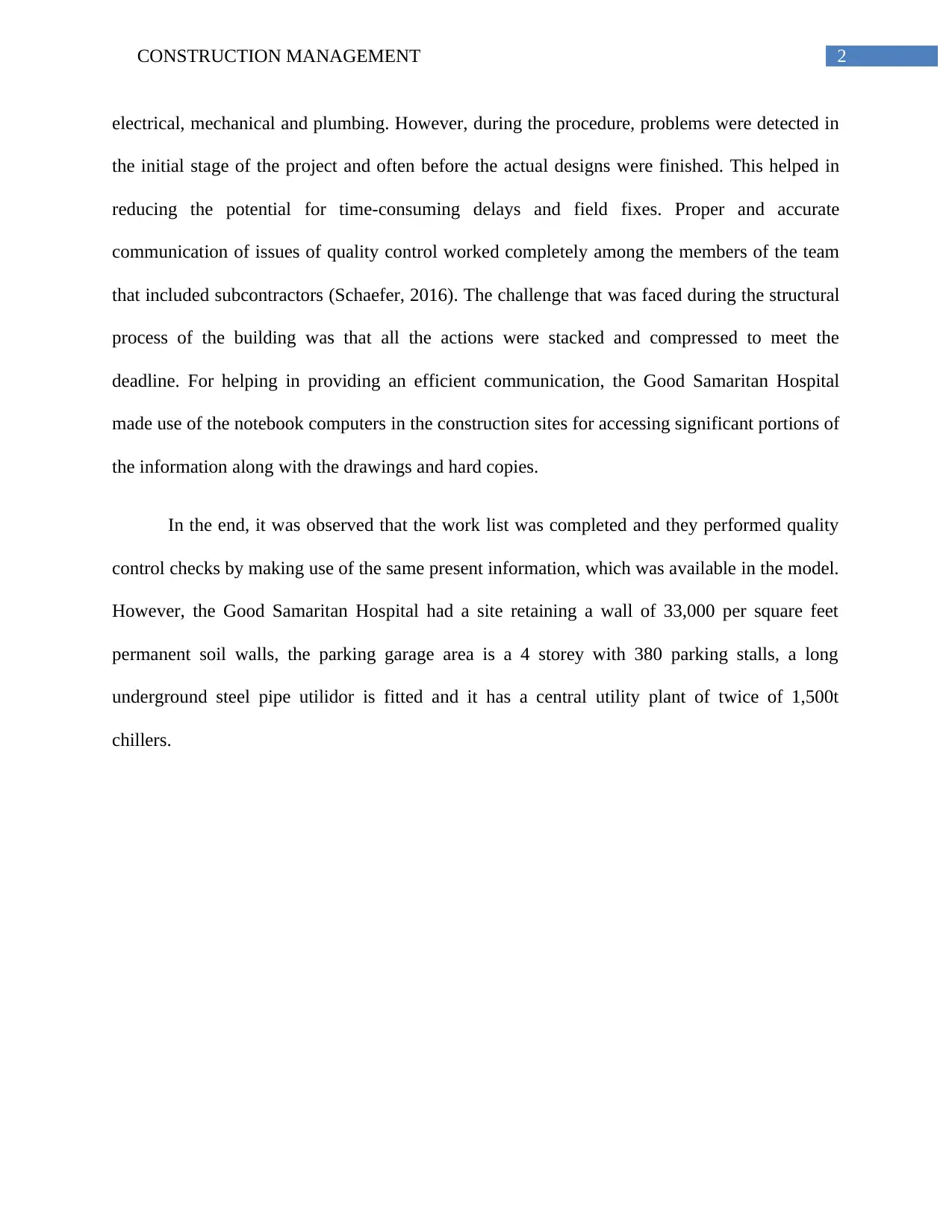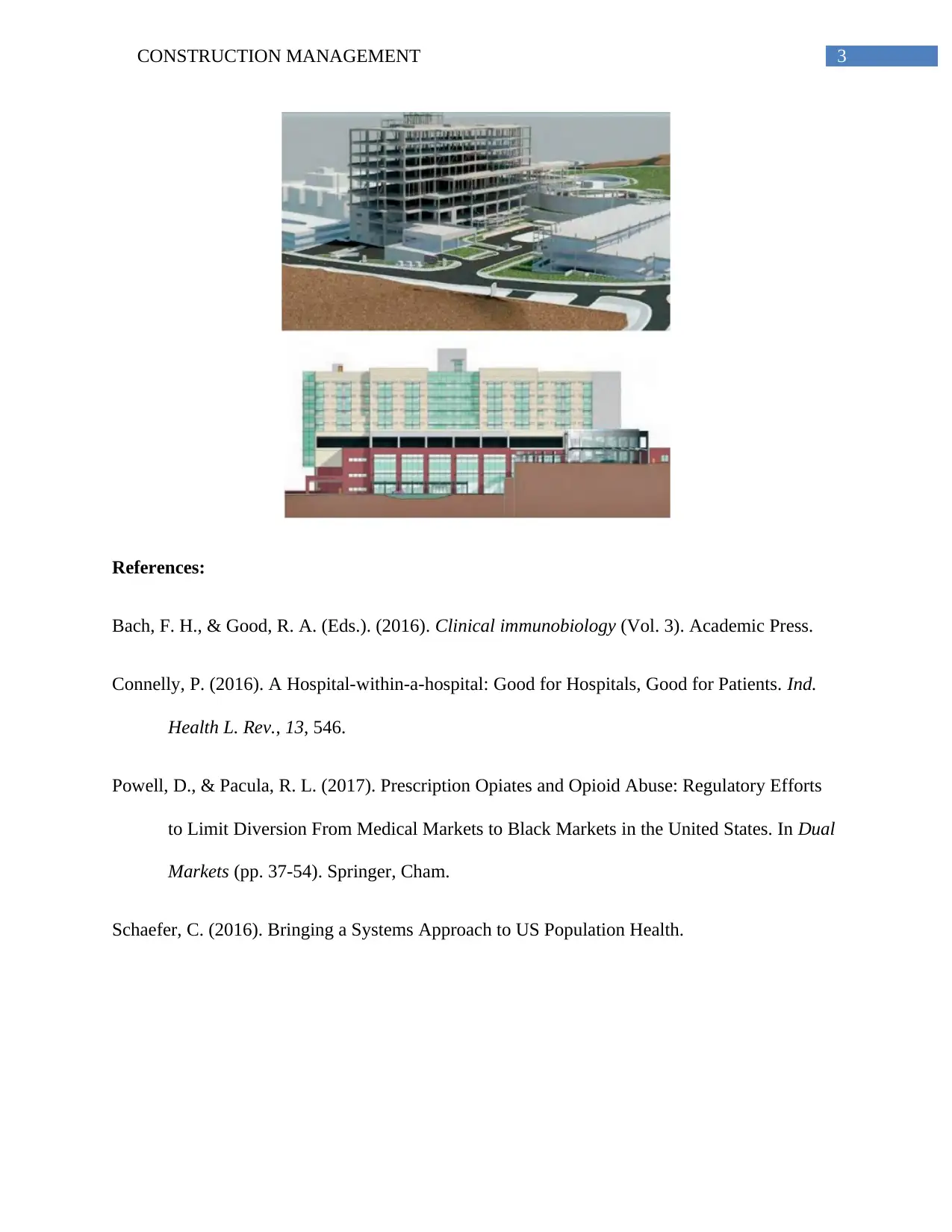CMG 6402 - BIM Application in Construction of Hospital Project
VerifiedAdded on 2023/06/15
|4
|701
|349
Report
AI Summary
This report analyzes the implementation of Building Information Modeling (BIM) in the Good Samaritan Hospital project. The project utilized 3-D modeling software and a central file transfer site for design updates and coordination among team members. Electrical and mechanical subcontractors developed their own 3-D models early in the process, which were regularly compared to the architectural and structural models to identify potential issues and reduce delays. The use of notebook computers on-site facilitated efficient communication and quality control. The project included a retaining wall, a parking garage, an underground steel pipe utilidor, and a central utility plant. The report highlights the benefits of BIM in enhancing project quality, communication, and coordination.
1 out of 4










![[object Object]](/_next/static/media/star-bottom.7253800d.svg)